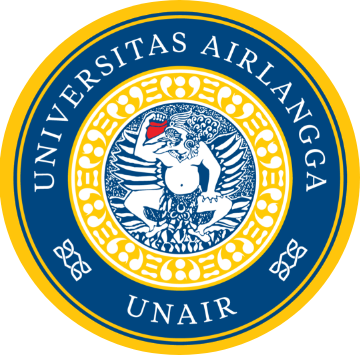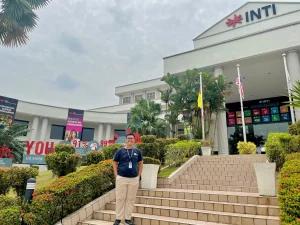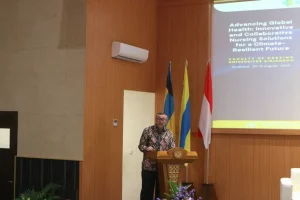UNAIR NEWS – The Faculty of Medicine Universitas Airlangga (UNAIR) continues its efforts to educate the public through its digital health platform, Dokter UNAIR TV. In a recent Doctor Education series, the program presented a session titled “Understanding Pneumonia: Is It Dangerous?” on Friday, December 27, 2024. The discussion featured dr. Kudiarto, Sp.P., a pulmonary specialist at Universitas Airlangga Hospital (RSUA), as the keynote speaker.
“Pneumonia, often referred to as ‘wet lung,’ occurs when the lungs are filled with pus or other fluid secretions,” Dr. Kudiarto explained at the start of the session. He described pneumonia as an infection affecting the lungs, which are structured like interconnected grape clusters. This infection leads to inflammation, eventually causing the fluid buildup associated with the condition.
“This fluid impedes the flow of air, making shortness of breath the most common initial symptom,” he said. The inflammation caused by the infection also triggers other symptoms such as coughing, fever, and chest pain.
However, these symptoms can vary greatly depending on the patient. “For example, in patients over 65, it’s uncommon to see all these symptoms together. Sometimes, only fever and reduced appetite are present,” he added.
Causes and treatment of pneumonia
The primary cause of pneumonia is infection by microorganisms. “These include bacteria, fungi, and viruses, with the exception of tuberculosis-causing viruses,” dr. Kudiarto noted.
In young adults, bacteria are the most common cause. These bacteria are categorized as either typical or atypical. Typical bacteria lead to standard pneumonia symptoms, while atypical bacteria can cause unusual symptoms such as fatigue, diarrhea, and nausea. Among children, pneumonia is more frequently caused by viruses.
Treatment for pneumonia is tailored to its cause. “For bacterial infections, antibiotics are used. Antifungal medications are prescribed for fungal infections, and antiviral drugs are given for viral causes,” he said.
In addition to antimicrobial treatments, therapy also addresses symptoms and potential complications. While pneumonia is curable, each type of microorganism requires specific treatment approaches.
Prevention strategies for pneumonia
Pneumonia is a serious condition. According to dr. Kudiarto, the World Health Organization (WHO) identifies pneumonia as the leading cause of death among children under five. Data from Indonesia’s Health and Social Security Agency (BPJS) also places pneumonia among the top ten illnesses requiring hospitalization.
“Sadly, pneumonia is often overlooked in developing countries like Indonesia,” dr. Kudiarto emphasized. He underscored the importance of raising awareness and promoting preventative measures against the disease.
Pneumonia prevention involves breaking six key transmission links. The first is the microorganism itself. Second is the reservoir, which serves as the microorganism’s habitat. Third is the portal of exit, such as coughing, where microorganisms are expelled. Next is the entry point where microorganisms infiltrate the body. Transmission media, which facilitates their spread, and the individual’s immune strength are also critical factors.
Author: Zahwa Sabiila Ilman Ramadhani
Editor: Khefti Al Mawalia









